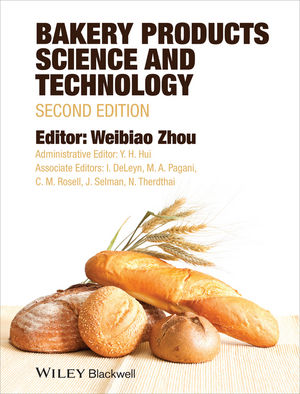Bean There, Done That
By Kathie Canning
Thanks to flavor and functionality enhancements, the soybean shows no signs of returning to its humble beginnings.
The little soybean has come a long way from its days as a meat extender and a beany-tasting vegetarian staple. Its evolution as a food ingredient can be attributed to many factors — improved bean varieties, processing enhancements, an FDA-approved heart-health claim and more.
As product developers continue to find new applications for soy ingredients, this versatile legume shows no sings of returning to its humble beginnings. Moreover, mainstream consumers will be eager to sample the results — their opinion of soy today is completely different than it was 20 or 30 years ago, particularly in terms of its health benefits.
“Consumer perception has changed over the years,” stresses Cheryl Borders, research manager, soy foods applications for Decatur, Ill.-based Archer Daniels Midland Co. “According to the United Soybean Board’s 2004-2005 ‘Consumer Attitudes About Nutrition Study,’ 74% of U.S. consumers perceive soy products as healthy. It wasn’t that many years ago that many people considered soy protein to be a cheap filler and inferior in quality to animal proteins.”
For 2005, that acceptance level shot up to 78%, says Jean Heggie, marketing leader, North America Food for The Solae Co.
“Nearly 44% of consumers relate consumption of soy to a particular health benefit such as heart health or weight management,” she says. “Additionally, consumer attitudes toward the taste of soy-based foods are changing, as well. As they have become more exposed to better-tasting products in the market, consumers, particularly younger consumers, are much more receptive to trying soy proteins than they were decades ago.”
The recent low-carb trend also provided an opportunity for soy protein ingredients, notes Rob Kirby, president of Nexcel Natural Ingredients, a division of Springfield, Ill.-based Spectrum Foods Inc.
“The low-carb explosion really demanded a great deal of soy innovation within a short time,” he says. “In general, the emphasis has been on improving flavor and on using new combinations of soy and non-soy ingredients to meet the challenges of a rapidly changing marketplace. … Since the low-carb bubble has burst, I’m not sure whether people are seeking soy-containing products for soy’s intrinsic health benefits or the health benefits of the products containing the soy.”
Of course, snack and bakery fare must taste good and score high marks in texture, mouthfeel and other key attributes to gain widespread consumer acceptance. Today’s soy ingredients make the grade in both flavor and functionality.
For example, soy proteins are available in a broad range of functionalities to suit a wide range of applications, Borders says. In addition, soy protein suppliers have perfected process improvements that net blander flavors, making soy more palatable to consumers.
Bye-Bye, Beany
The methods used to minimize soy’s historically “beany” flavor vary from one ingredient supplier to the next.
Cargill Health and Food Technologies of Minneapolis uses a patented process to improve the flavor of soy protein isolate, says Deborah Schulz, market development manager. “The traditional way of making an isolate is where you take the slurry of the beans with the protein contained in it, kind of like making cheese, where you use acid to adjust the pH to the isoelectric point of the protein so you get curd,” she says. “The way that we make Prolisse [isolate] is through a membrane filtration process, so we do not adjust the pH. It’s a gentler way of separating the protein, and you get some different properties, as well as the better flavor.”
For the Sunrich Food Group, a Hope, Minn.-based Stake Technology company that offers soymilk powders and other soy ingredients, processing is performed without componentizing the soy.
“We’re focused on the more whole soy technology,” notes Kate Leavitt, director, international sales and marketing. “There’s a health benefit when the soy is more intact, and we would maintain there’s a flavor benefit. You can get some off flavors, some almost acidic chemical overtones to some of the chemically extracted products on the market. Our technology is focused on the right varieties of soybeans that have this blander flavor profile — less grassy, beany flavor — and then we employ mechanical processing methods that help maintain the natural goodness.”
To create its Nexsoy brand of textured soy protein, soy protein concentrate, soy flour and soy grits, Nexcel Natural Ingredients employs a process that is completely hexane solvent-free, Kirby explains.
“The process utilizes a quick extrusion and mechanical separation process that has key sensory benefits, primarily the noticeable absence of the ‘soy’ taste and smell that is inherently developed in the solvent process,” he says. “The ingredients were developed for applications such as breads, crusts, baking mixes, nutrition bars, cereals, tortillas and tortilla chips, pretzels, extruded snacks and pasta products. Because the ingredients [lack] the soy taste, they can be incorporated at higher inclusion rates without affecting flavor. Because the process is natural, the Nexsoy products are available in natural, non-GMO and Certified Organic versions.”
Kerry Ingredient’s Nutriant Soy Ingredients of Cedar Falls, Iowa, manufactures all of its soy ingredients via a solvent-free certified organic process, notes Terry Gieseke, business development manager. Nutriant’s myriad offerings, which range from Solnuts soy nuts to whole grain soy flour to soy isolates, boast a superior taste in both snack food and bakery applications, she adds.
With today’s technologies, soy protein benefits can be added to many foods with no adverse impact on flavor, Heggie says.
“However, not all soy proteins are the same,” she cautions. “Soy protein companies such as The Solae Co. that have extensive technical support capabilities will be able to guide [product developers] on how to choose the right soy protein for a particular application and build a formula that delivers both great taste and health benefits.”
Flavor companies, too, have gained experience in the past few years with soy formulations, Schulz adds.
“Industry, in relative terms of food, has had very little time to deal with soy products,” she says. “They’ve had a whole lot of time to deal with dairy proteins and dairy products. We’ve had to work really hard with flavor suppliers and ingredient suppliers to be able to create the product because they just didn’t have the experience. But that has changed, too.”
And Cargill has expertise in-house to help here, she adds.
Form and Function
Soy’s evolution has as almost as much to do with form and function as it does with flavor improvements and health benefits. Today, a wide variety of ingredient formats — ranging from soy flours to soy protein isolates — enhances everything from shelf life to texture.
Solae’s extruded soy protein nuggets, which range from 60% to 80% protein, allow product developers to add protein to foods such as nutrition bars, snack mixes, cookies and cereals in a crispy, crunchy format, Heggie says. The company’s new Supro 313/320 soy technology actually helps extend shelf life by reducing the rate of bar hardening in nutrition bars, she adds, while its powdered soy protein ingredients boost the protein content in snack food and bakery applications — and are more economical than milk proteins.
“We offer soy proteins with water absorption properties that are particularly suited for baked goods applications,” Heggie continues. “The Solae Co. also offers textured soy protein concentrates, which are approximately 70% protein and approximately 20% dietary fiber. These products have an ‘oat-like’ appearance and can often be used in cereals, baked goods and bars when that type of texture and appearance are desired.”
Because soy flour is being produced in a more uniform manner than it was in years past, it is going into a greater number of bakery applications, says Bill Limpert, senior research chemist for Cargill Texturizing Solutions, which offers Prolia soy flour, Prosante textured soy flour and Prosante Plus flavored textured soy flour.
Soy flour can improve machinability and provide a source of fiber, maintains Borders, and enzyme-active soy flour performs crumb-whitening duties.
“Full-fat whole-bean powder and re-fatted soy flours are often used in moist, dense cakes due to their emulsification abilities,” she notes. “They may also help in reducing added fat and eggs in the formulation.”
In many cases, says Limpert, soy flour can be used instead of soy concentrate or isolate because it has more carbohydrates, which provide functionality in some bakery items. Other areas — whipping agents, for example — need concentrates or isolates to do the job.
Prolia flours are offered in a variety of PDI (Protein Dispersibility Index) levels (referring to the extent the product is cooked and denatured). They can be used in breads, buns, doughnuts and more, says Limpert, and highly cooked soy flour even can be blended with wheat flours to create a “very pleasant-tasting nutty flavored cracker.”
In cake doughnuts, soy flour long has been used to prevent the absorption of excess oil, Limpert notes. Moreover, the American Institute of Baking has shown that the flour can replace egg and sometimes other dairy proteins in pancakes and other baked items to substantially reduce costs — while serving up more protein. And soy flour boosts shelf life in bakery items because it holds a lot of moisture.
In the snack arena, both textured soy flour pieces and soy isolate crisps now add form and function, Limpert says. The crisps also resolve the hardening problem in bar applications.
“If you can imagine having a nougat type of bar, that was where the challenge was,” Schulz says. “If you take the protein out of the nougat and put it into a crispy piece, then it provides not only the crunch and texture, but also gets rid of that bar hardening problem. The protein delivery is in a different way.”
Soy grits, too, fit nicely into snack applications.
“Customers have been highly successful incorporating our soy grits into snack foods such as tortilla chips to increase soy protein content and reduce carbs without affecting texture or flavor,” Kirby explains. “The ‘natural’ flavor of the Nexsoy ingredients actually improves palatability in some products.”
Nutriant soy ingredients provide excellent functional performance characteristics in snack and bakery applications, Gieseke notes.
“Snack food manufacturers have been able to achieve targeted color, water activity/shelf life, fat profiles, protein and fiber content and production throughputs using Nutriant soy ingredients,” she says. “In the baking arena, the unique flavor and functional performance characteristics of Nutriant soy ingredients are allowing inclusion levels that help manage cost by reducing milk and egg use in cakes, extend shelf life by managing moisture content and migration across multiple systems, contribute softer and ‘fresher-longer’ characteristics in breads, and allow the elimination of trans fat with little or no saturated fat in cookies, with excellent economics.”
The relatively high price of isolates usually means that their use in snack and bakery items is reserved for products in which added health benefits are desired, Schulz says.
“Isolates are primarily used to bring protein into the picture, to provide unique marketing capabilities by having a higher-protein product,” she says. “A benefit that we think Prolisse brings to the table is improved flavor.”
Functionality varies widely on the soy concentrate and isolate side, maintains Borders, who notes that ADM offers a complete line of soy protein products.
“[Manufacturers] should consult with their soy protein suppliers to get their recommendation for the appropriate protein,” she says. “They will take into consideration the need for emulsification, water holding and gelling properties to attain the desired final product and nutritional profile.”
Just In
The newest soy ingredients promise to further enhance the category.
Sunrich recently began to produce an organic soy fiber called Organic Okara, notes Bill Fenske, vice president of R&D.
“It’s an exciting development because it’s low in fat, and it’s very high in fiber and protein,” he says. “It would go into the same things as our soymilk powders — nutrition bars, breads to get the fiber up, cereals, cookies, meat products. It locks in moisture and extends shelf life.”
Developments on the soybean oil side of things also are creating a buzz.
Richard Galloway is a technical consultant and a staff member of QUALISOY, a collaborative effort among the soybean industry to help market the development and availability of healthier soybeans and soy oil and improve the global competitiveness of the U.S. soybean industry. He points to industry work to develop soybean varieties with more stable fatty acids.
“This past year, Monsanto introduced its VISTIVE line of soybeans, and Pioneer its Nutrium line, both of which have decreased linolenic acid, the most unstable polyunsaturated fat in soybean oil,” Galloway says. “The oil derived from these varieties is being processed by AGP, Bunge and Cargill, among others, and offered to the food industry as an alternative to partially hydrogenated vegetable oil.
“Besides the natural fatty acid profile modifications, ADM has introduced enzymatic interesterification as a processing alternative to hydrogenated vegetable oils,” he adds. “This process increases both the flavor and heat stability of the finished oil without producing trans fats.”
The low-linolenic soybean oils make suitable substitutes for partially hydrogenated vegetable oils in cookies, crackers and chips, he explains, exhibiting excellent flavor stability over time. Interesterified soybean oil and blends of fully hydrogenated soybean oil with low-linolenic soybean oil make great replacements for the vegetable oil shortenings now used in many baking applications.
There seems to be no end in sight for the development of new soy-based ingredients.
“It can go into a baked product, a pasta product, a meat analog, a beverage, an extruded snack product,” Sunrich’s Leavitt explains. “Then there’s roasted soy nuts, soy flakes and these other crunchy, nutty mimickers that are replacing some historic nut products. It’s a very versatile product.” SF&WB
Dynamic Duo
When Los Angeles-based Tumaro’s Gourmet Tortillas decided to create a line of healthed-up tortillas, it partnered up with a soy pro — and opted for a branding strategy that included the ingredient supplier’s logo on the packaging.
The results from this dynamic duo? New Soy-full Heart flatbreads made with Solae soy protein.
“We like the Solae brand of soy protein because they have over 30 years of scientific experience in support of people using their product, and we liked the way the product worked in mixing with the tortillas,” says Brian Jacobs, vice president of Tumaro’s. “It didn’t have a real strong aftertaste, and the overall flavor profile and functionality worked better than any other brand we tested.”
The multi-grain line includes three varieties: Wheat, Soy & Flax; 8 Grain ‘N Soy, and Apple ‘N Cinnamon.
Editor’s Note: For more on tortillas, please refer to Tortilla Trends magazine, located inside this month’s issue of SF&WB.
Did you know?
Residents in Boston, San Francisco, Portland, San Diego and Denver consume more soy foods than people in other U.S. cities do, according to a recent Soyatech and SPINS survey, “Soyfoods: The U.S. Market 2005.”
Under Fire
In a recent statement, the American Heart Association (AHA) Nutrition Committee cast a bit of doubt on soy’s ability to reduce the risk for coronary heart disease (CHD). Based on a review of 22 soy-related studies, the committee suggested that soy protein did not reduce bad cholesterol, or LDL, to the extent originally thought and had no effect on good cholesterol, or HDL. Since 1999, FDA has allowed manufacturers to include a heart-health claim on products containing 25 gm. or more of soy protein.
Mainstream media was quick to jump all over the news, and suddenly soy’s benefits were under fire.
As it turns out, however, the findings are not so bleak.
Even the AHA Nutrition Committee concluded that soy products should be considered beneficial because of their high content of polyunsaturated fat, fiber and minerals, and their low content of saturated fat and cholesterol — as well as their ability to substitute for foods known to contribute to blood cholesterol levels.
Lore Kolberg, manager, regulatory and scientific affairs for Cargill Health and Food Technologies, says the 3% cholesterol reduction the committee ultimately recognized for soy protein is “pretty much in line” with FDA’s original conclusion when the agency issued its health claim. Moreover, she says, a recent meta-analysis published in the American Journal of Clinical Nutrition showed a 5% reduction in LDL.
“For every percent reduction in LDL cholesterol, that results in a 2% reduction in risk,” she adds. “So we’re talking potentially up to a 10% reduction in CHD.”
“We’ve got to keep in mind that soy is only one component of a healthy diet,” adds Kate Leavitt, director, international sales and marketing for the Sunrich Food Group, Hope, Minn. “It’s not a miracle food, per say, but it’s certainly a very tasty alternative that can make your life a little healthier.”



